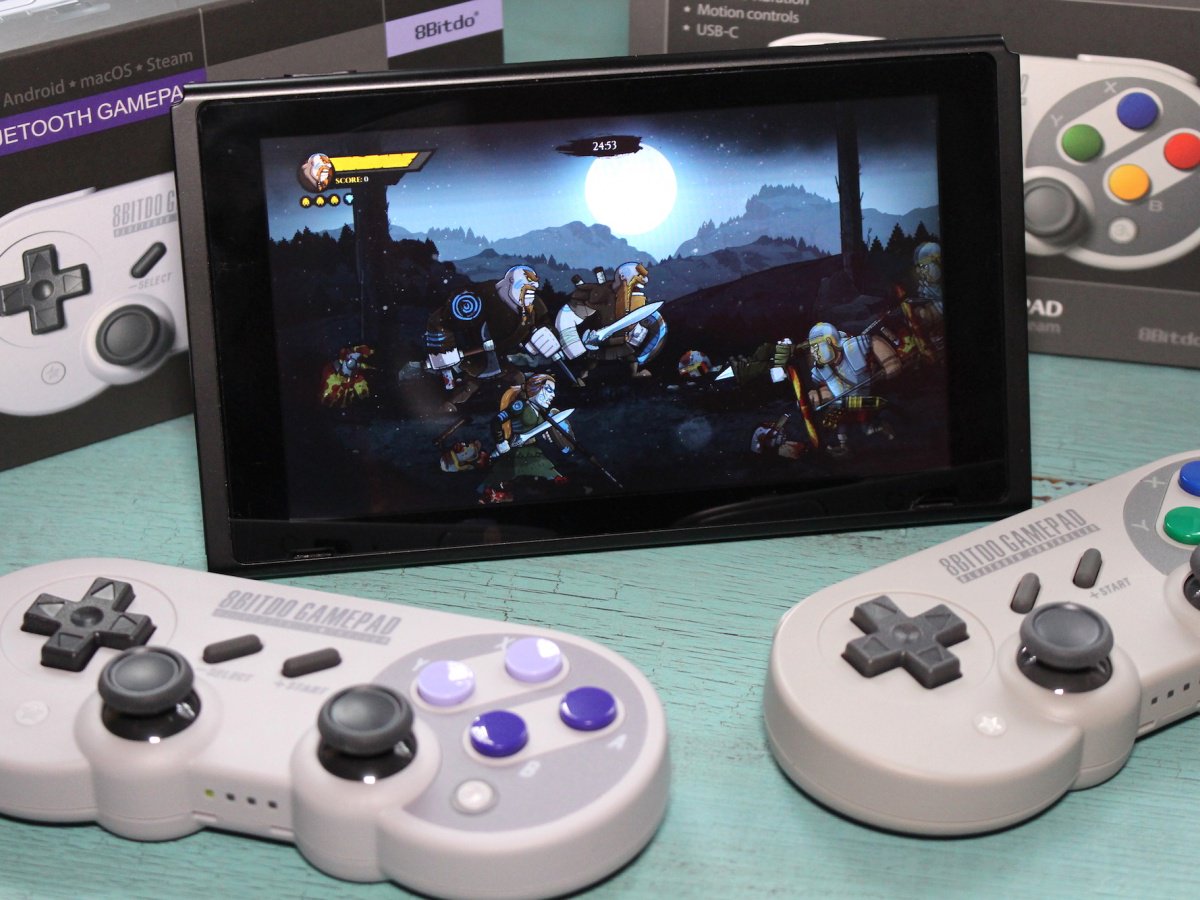

The Switch Lite even fits into most of my shorts pockets, though I probably wouldn’t throw it in there without a protective case. That’s something I’d never do on my old Switch, which already feels massive after a few days with the Lite. I felt far less conspicuous than usual when I whipped out the smaller Switch to play some SNES games on the subway, and found myself continuing to play it as I stood on the platform in between train transfers. The benefits of the Switch Lite’s smaller design really became apparent when I started using it on my daily commute. But the Switch Lite is a single, sturdy chunk of plastic, making it feel like a true handheld rather than a display with two controllers strapped to the sides of it. The OG Switch has a lot of moving parts with its detachable Joy-Cons and large tablet display, and you can feel everything wiggle a bit when you’re holding the system in handheld mode.

The console’s matte finish adds some nice extra grip, and seems to be far less prone to fingerprints than the glossy, smudge-prone tablet on the standard model.ĭespite being the smaller, cheaper Switch, the Switch Lite feels more well made than its bigger brother. The Lite’s white buttons pop nicely in contrast to the system’s gorgeous color options - I’m especially fond of our turquoise model, but the system also looks great in yellow, gray and coral. Nintendo’s miniature Switch is one of the most comfortable and attractive handheld consoles I’ve ever touched, with a compact 8.2 x 3.6-inch design that feels more travel-friendly than the standard 9.4 x 4-inch Switch. But there’s a lot of valley in-between, and while I arrived in Rainy Woods eager for a pleasant countryside escape, I didn’t feel like making a return trip after the credits had rolled.I fell in love with the Switch Lite the moment I picked it up - it’s just that adorable. I certainly enjoyed parts of it, and some of its stranger moments really do land as big, enjoyable peaks. The Good Life does many things, but they never felt like they coalesced together into an experience that could stick with me. Even exciting aspects, like turning into a dog or cat, feel mundane after a while. The quirkiness of its world and characters is the one aspect that really makes The Good Life feel its own, and it has to carry a lot on its shoulders. Between all of the hobbies and sidequests Naomi can pick up, there’s a lot to do but not quite enough to set it apart. But even then, there are other games that do this better. There are certainly folks this will appeal to, especially if they like the feeling of checking tasks off lists in a virtual world. There are a lot of side quests that I could only make a fair dent in, so there might be more there as each citizen’s quest line goes deeper, but I soon saw side quests as a means to earn cash rather than something I was eager to engage with. They encourage paying attention to the environment, but also feel like they could be a bit more involved. And getting more Emokes in general entails adhering to certain “buzzwords” that refresh twice a week. Most of the photo targets focus on either searching for an object or setting in the world, or in some cases, waiting for a person to do something so you can snap a picture of it. Instead, I spent a lot of time riding sheep and tracking smells as a dog. At the start of the game, it seems like a mystery game where getting to know the locals and snap good shots will be key. The Good Life introduces a lot of ideas and then moves them aside for other ideas. It’s more that the photography felt underutilized, and much like other aspects of The Good Life, starts to feel like an afterthought. There isn’t much more customization beyond that, and it was really more point-and-click than something with involved post-processing or finicky camera controls, but it fits the vibe. The most steady income in The Good Life comes from Flamingo, a social media app where you upload photos you take in the world and get paid for likes, or “Emokes.” The photography works, and I like that there are also options for picking up additional lenses in a wide-angle and telephoto lens. Of course, it all could all fall apart thanks to a little cold or a shortage of cash, and then you’re sent into a spiral trying to scrape together what you need to be healthy again and resume a quiet, easygoing rural life. On my way to see one character to advance a main plot point, I could also stop off to eat some food, catch up with the quirky and endearing folks living in Rainy Woods, and take a few snapshots to boost up my social media account. I would fill my quest log with little activities and tick them off as I went about my day. Generally, I liked how easygoing this still felt.


 0 kommentar(er)
0 kommentar(er)
